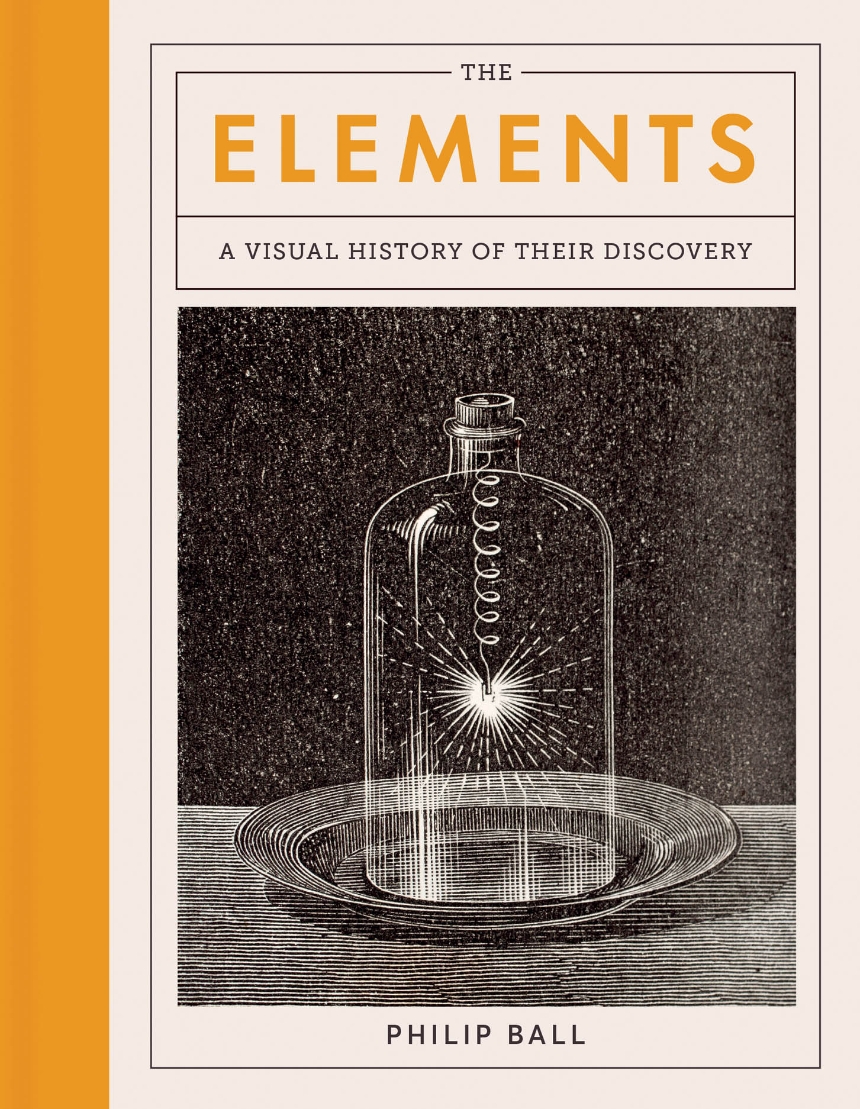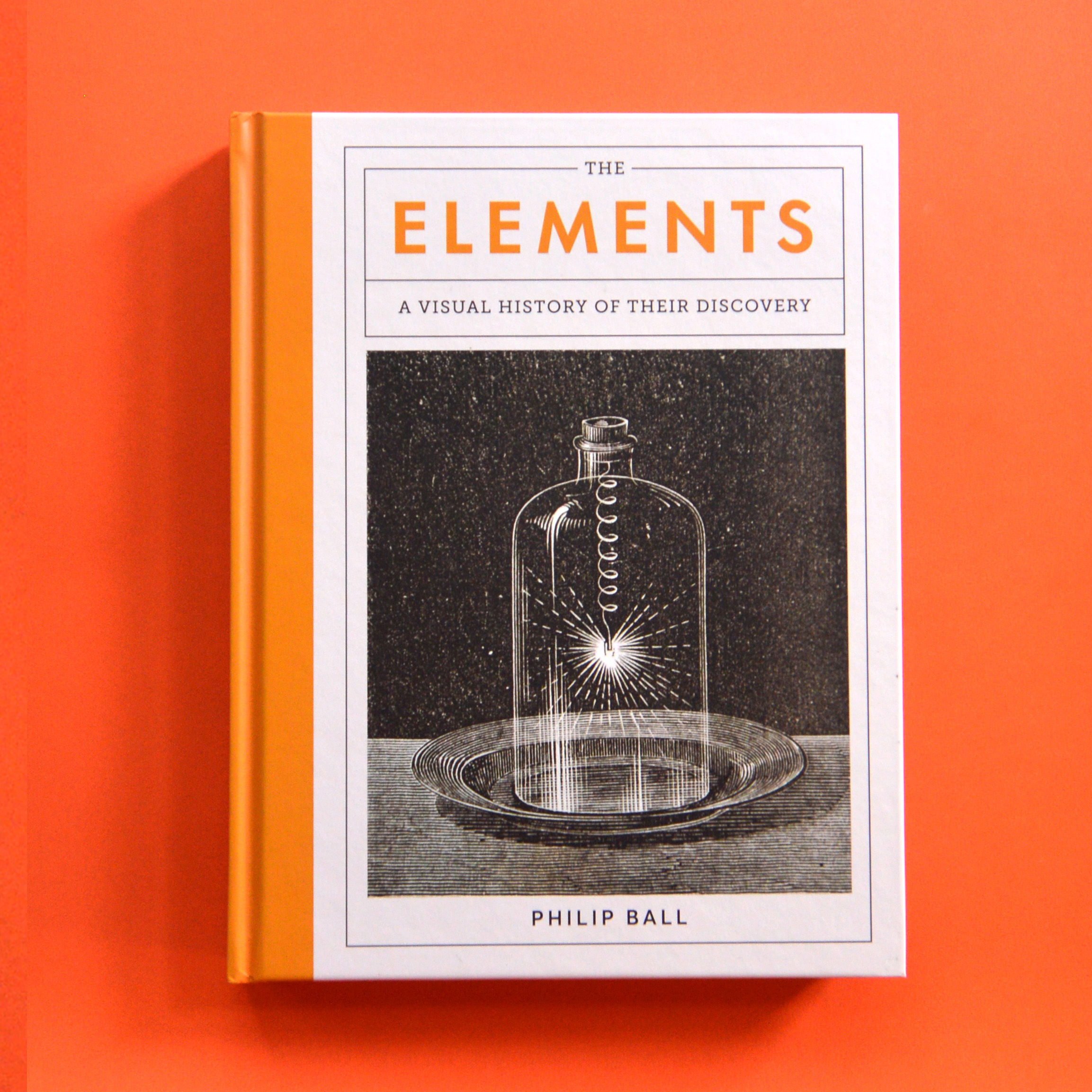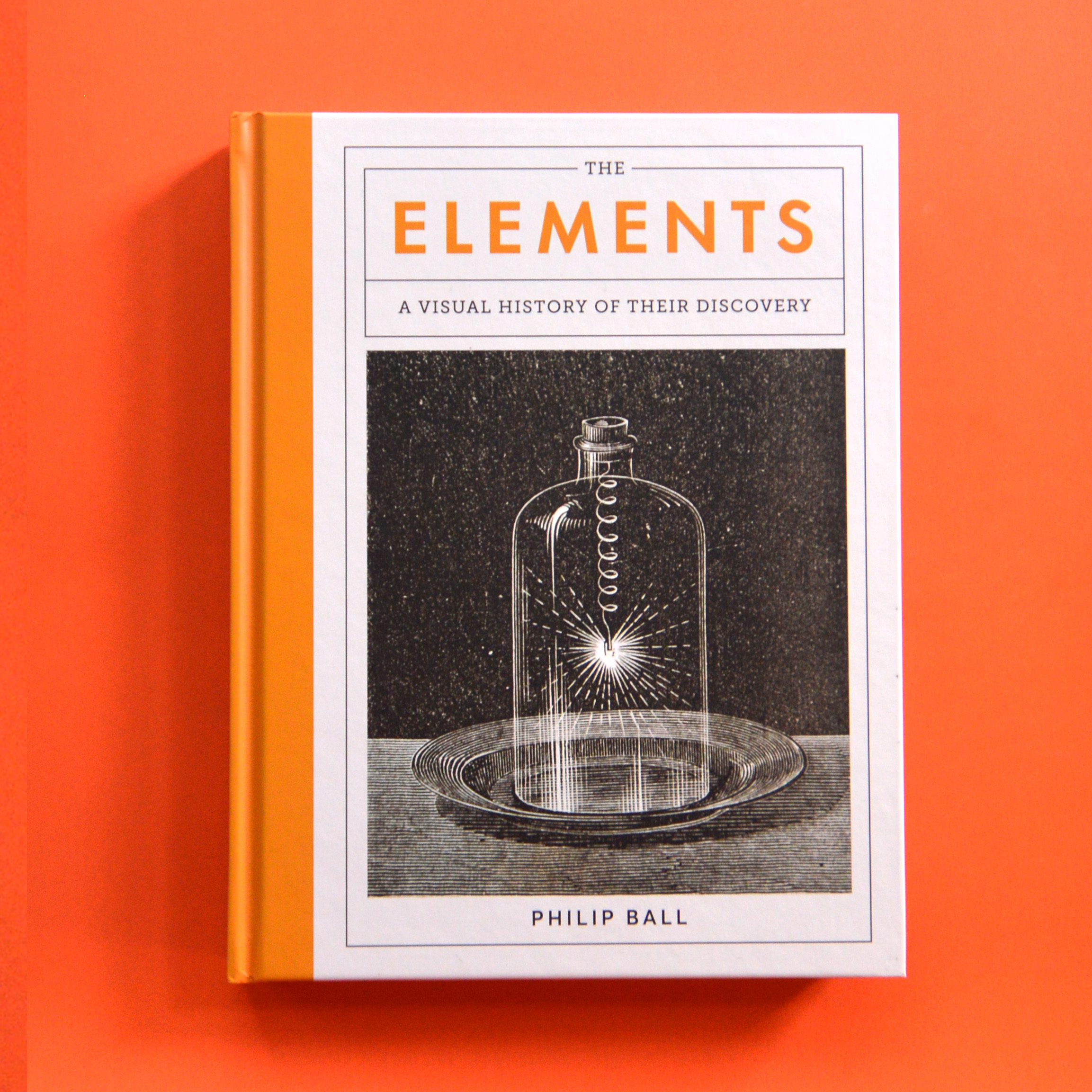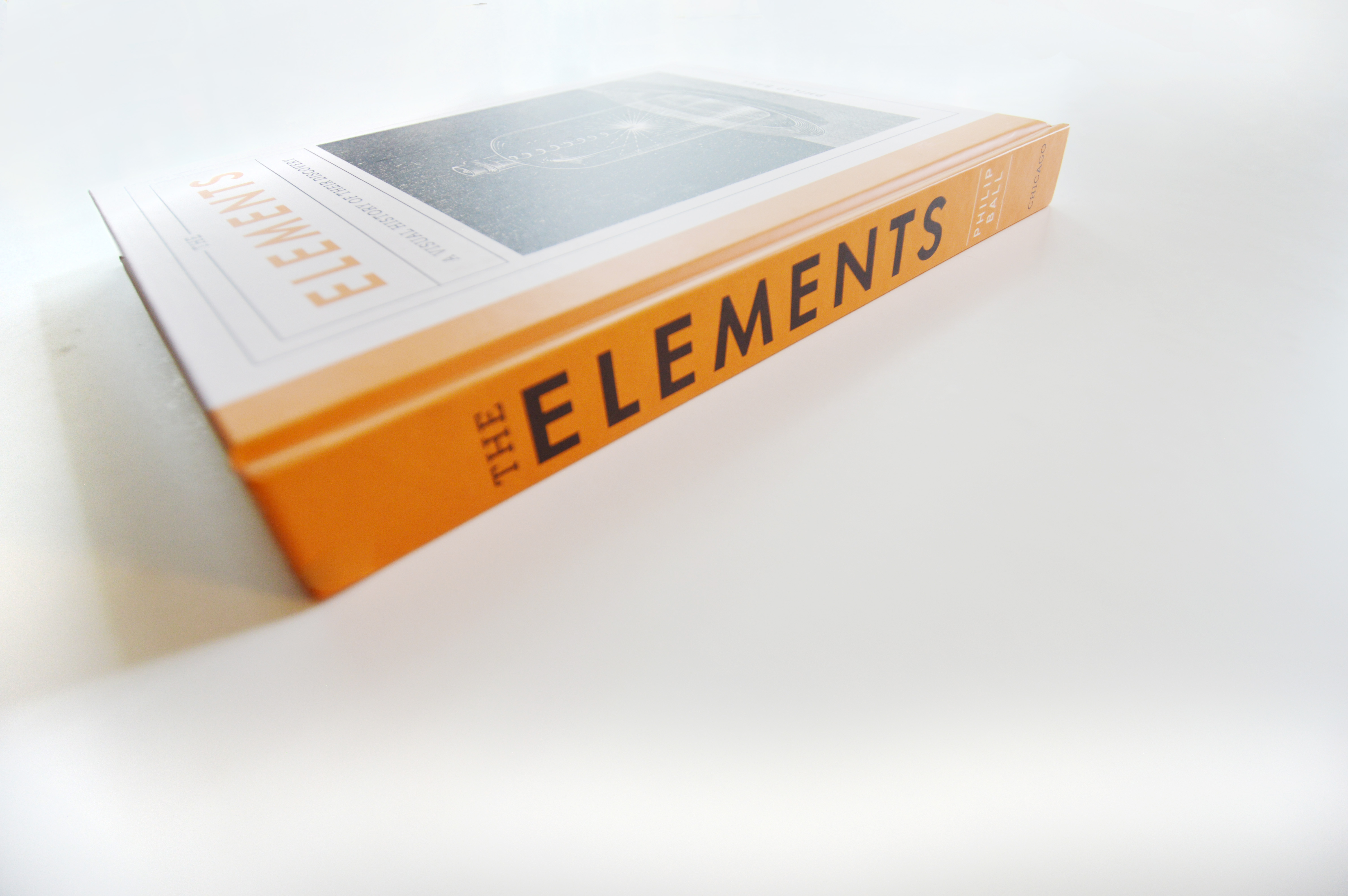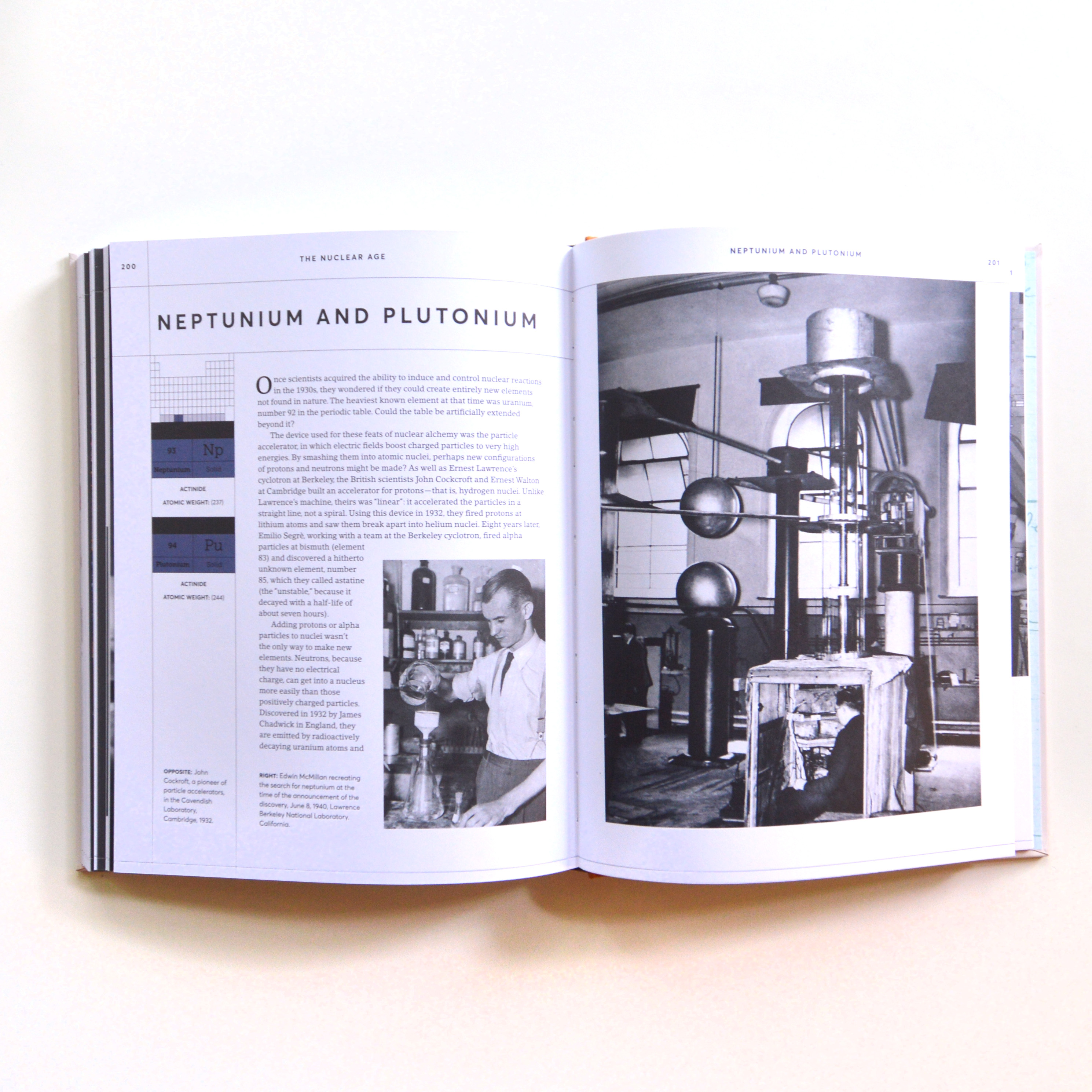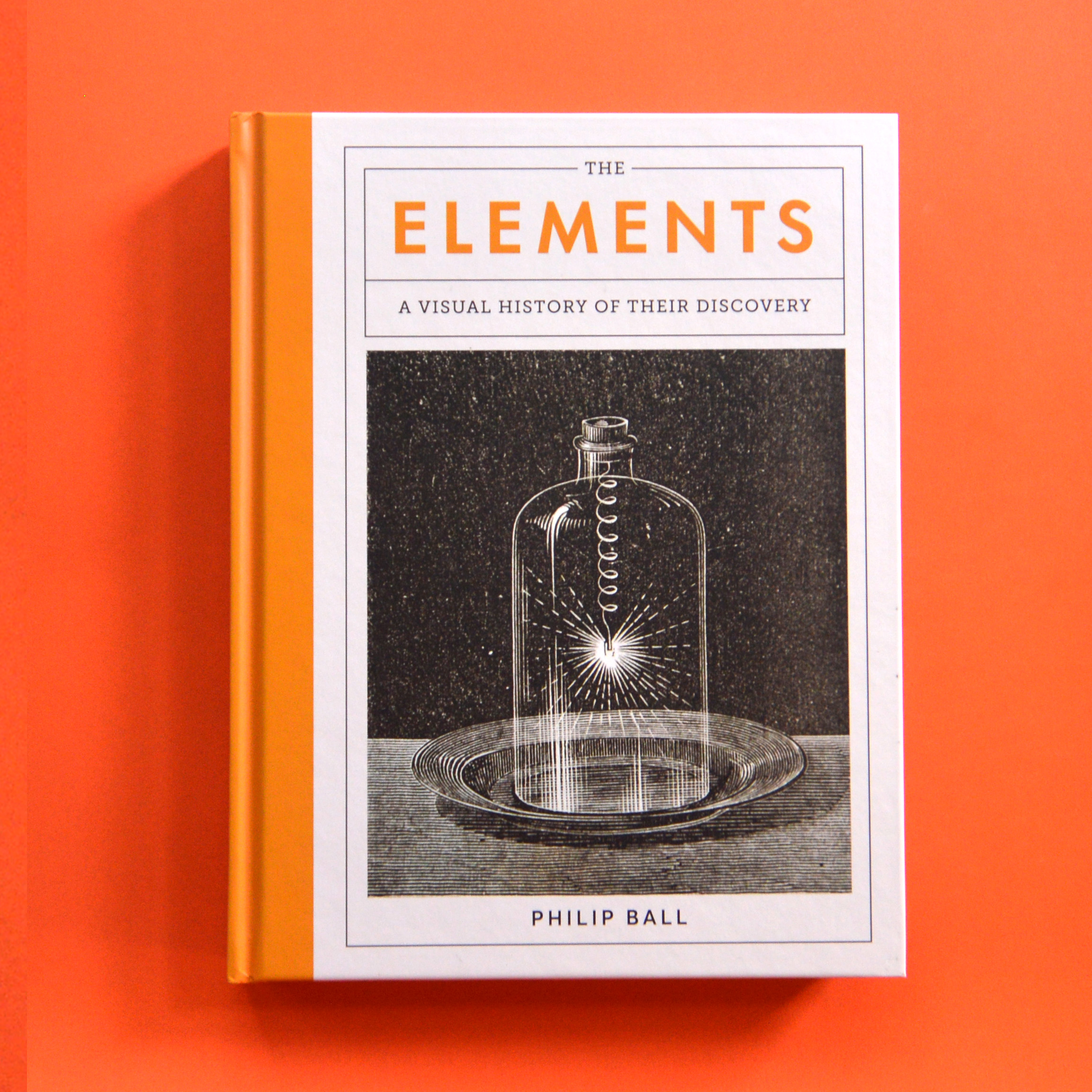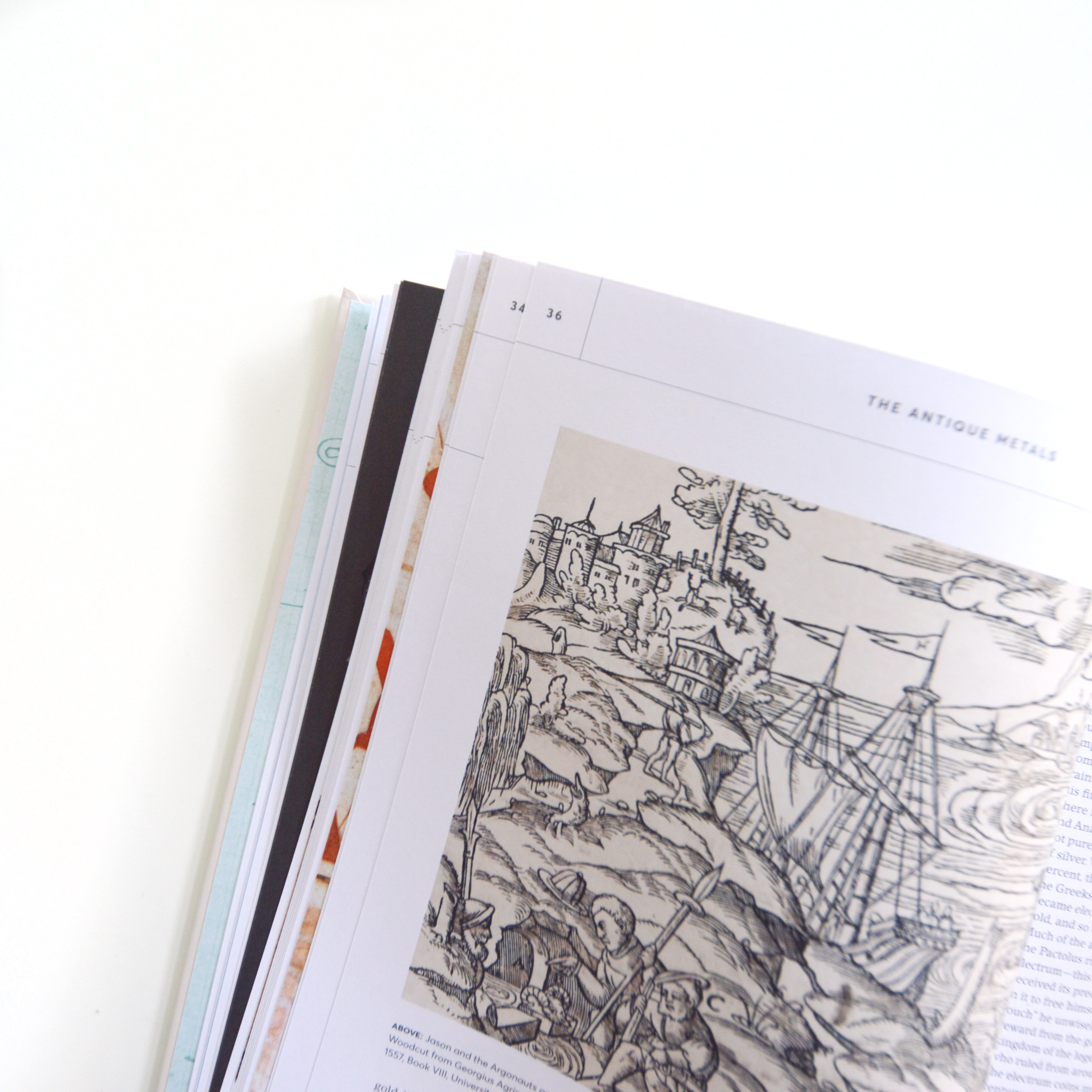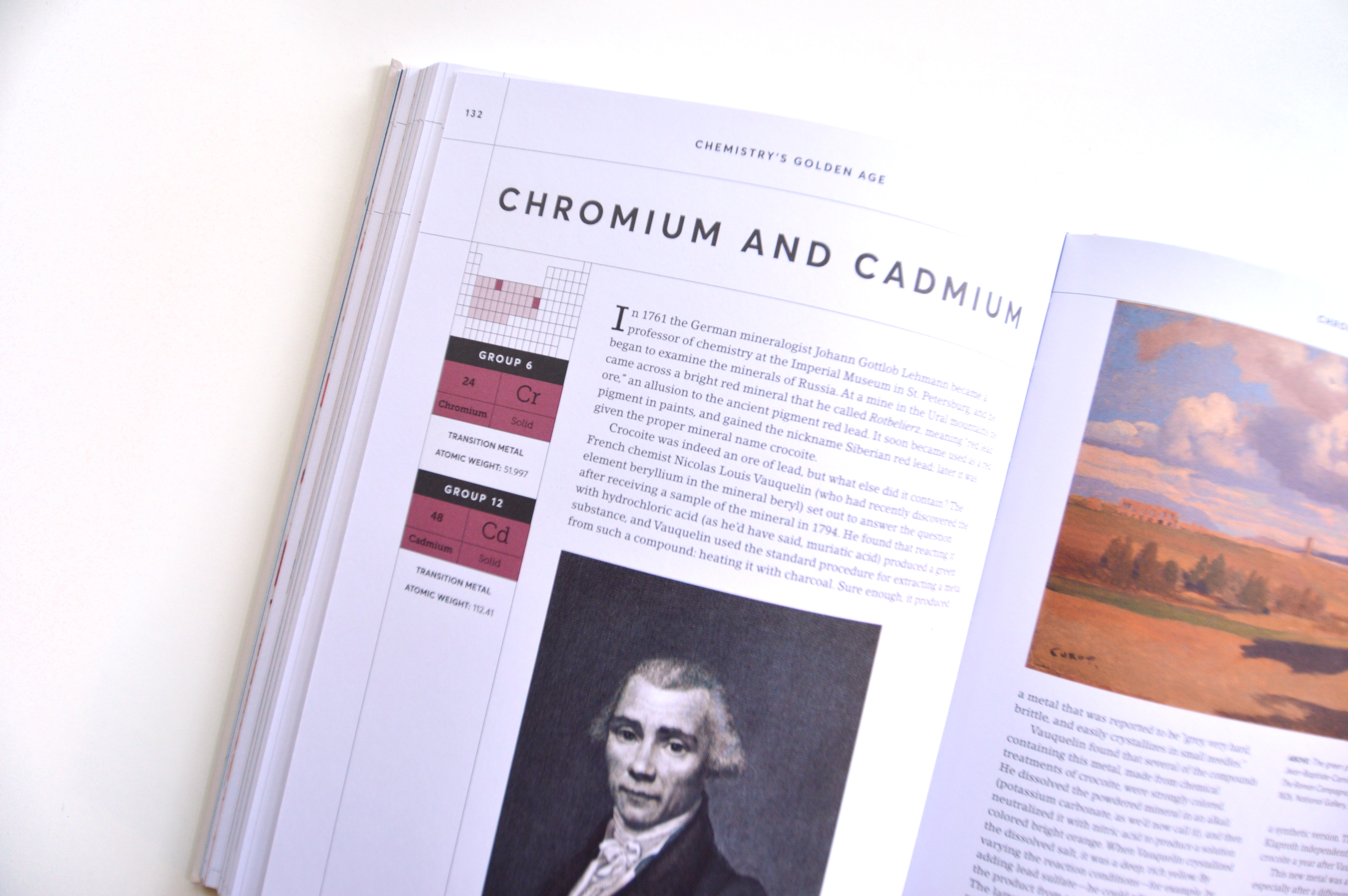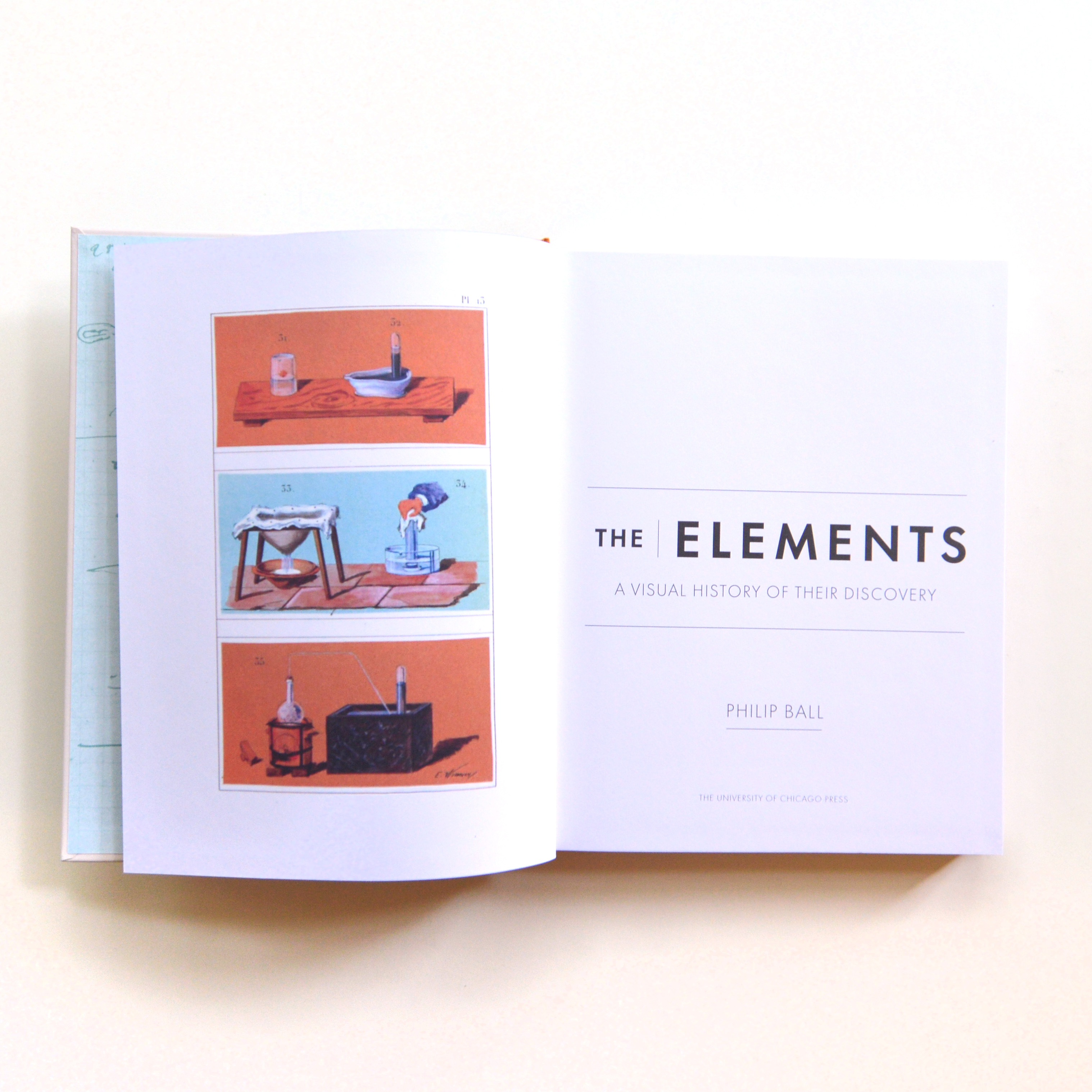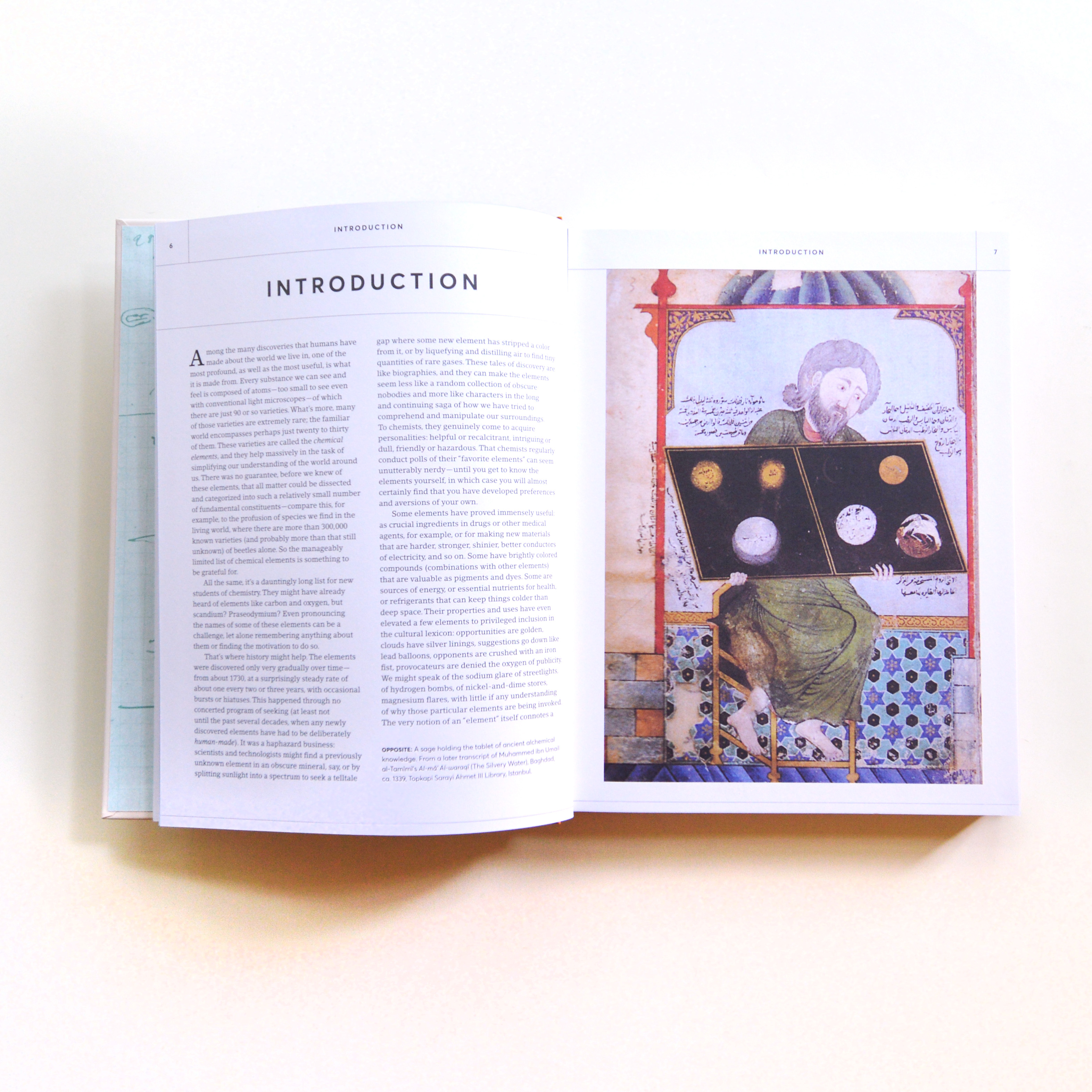The Elements
A Visual History of Their Discovery
From water, air, and fire to tennessine and oganesson, celebrated science writer Philip Ball leads us through the full sweep of the field of chemistry in this exquisitely illustrated history of the elements.
The Elements is a stunning visual journey through the discovery of the chemical building blocks of our universe. By piecing together the history of the periodic table, Ball explores not only how we have come to understand what everything is made of, but also how chemistry developed into a modern science. Ball groups the elements into chronological eras of discovery, covering seven millennia from the first known to the last named. As he moves from prehistory and classical antiquity to the age of atomic bombs and particle accelerators, Ball highlights images and stories from around the world and sheds needed light on those who struggled for their ideas to gain inclusion. By also featuring some elements that aren’t true elements but were long thought to be—from the foundational prote hyle and heavenly aetherof the ancient Greeks to more recent false elements like phlogiston and caloric—The Elements boldly tells the full history of the central science of chemistry.
The Elements is a stunning visual journey through the discovery of the chemical building blocks of our universe. By piecing together the history of the periodic table, Ball explores not only how we have come to understand what everything is made of, but also how chemistry developed into a modern science. Ball groups the elements into chronological eras of discovery, covering seven millennia from the first known to the last named. As he moves from prehistory and classical antiquity to the age of atomic bombs and particle accelerators, Ball highlights images and stories from around the world and sheds needed light on those who struggled for their ideas to gain inclusion. By also featuring some elements that aren’t true elements but were long thought to be—from the foundational prote hyle and heavenly aetherof the ancient Greeks to more recent false elements like phlogiston and caloric—The Elements boldly tells the full history of the central science of chemistry.
224 pages | 200 color plates | 7 1/2 x 9 3/4 | © 2021
History: Discoveries and Exploration, History of Technology
Physical Sciences: History and Philosophy of Physical Sciences
Reviews
Table of Contents
Introduction
The Periodic Table
Chapter 1. The Classical Elements
Chapter 2. The Antique Metals
Chapter 3. Alchemical Elements
Interlude: What Exactly Is an Element?
Chapter 4. The New Metals
Chapter 5. Chemistry’s Golden Age
Interlude: John Dalton’s Atoms
Chapter 6. Electrical Discoveries
Interlude: The Periodic Table
Chapter 7. The Radiant Age
Chapter 8. The Nuclear Age
Sources for Quotes
Further Reading
Index
Picture Credits
The Periodic Table
Chapter 1. The Classical Elements
Chapter 2. The Antique Metals
Chapter 3. Alchemical Elements
Interlude: What Exactly Is an Element?
Chapter 4. The New Metals
Chapter 5. Chemistry’s Golden Age
Interlude: John Dalton’s Atoms
Chapter 6. Electrical Discoveries
Interlude: The Periodic Table
Chapter 7. The Radiant Age
Chapter 8. The Nuclear Age
Sources for Quotes
Further Reading
Index
Picture Credits
Excerpt
Among the many discoveries that humans have made about the world we live in, one of the most profound, as well as the most useful, is what it is made from. Every substance we can see and feel is composed of atoms—too small to see even with conventional light microscopes—of which there are just 90 or so varieties. What’s more, many of those varieties are extremely rare; the familiar world encompasses perhaps just twenty to thirty of them. These varieties are called the chemical elements, and they help massively in the task of simplifying our understanding of the world around us. There was no guarantee, before we knew of these elements, that all matter could be dissected and categorized into such a relatively small number of fundamental constituents—compare this, for example, to the profusion of species we find in the living world, where there are more than 300,000 known varieties (and probably more than that still unknown) of beetles alone. So the manageably limited list of chemical elements is something to be grateful for.
All the same, it’s a dauntingly long list for new students of chemistry. They might have already heard of elements like carbon and oxygen, but scandium? Praesodymium? Even pronouncing the names of some of these elements can be a challenge, let alone remembering anything about them or finding the motivation to do so.
That’s where history might help. The elements were discovered only very gradually over time—from about 1730, at a surprisingly steady rate of about one every two or three years, with occasional bursts or hiatuses. This happened through no concerted program of seeking (at least not until the past several decades, when any newly discovered elements have had to be deliberately human-made). It was a haphazard business: scientists and technologists might find a previously unknown element in an obscure mineral, say, or by splitting sunlight into a spectrum to seek a telltale gap where some new element has stripped a color from it, or by liquefying and distilling air to find tiny quantities of rare gases. These tales of discovery are like biographies, and they can make the elements seem less like a random collection of obscure nobodies and more like characters in the long and continuing saga of how we have tried to comprehend and manipulate our surroundings. To chemists, they genuinely come to acquire personalities: helpful or recalcitrant, intriguing or dull, friendly or hazardous. That chemists regularly conduct polls of their “favorite elements” can seem unutterably nerdy—until you get to know the elements yourself, in which case you will almost certainly find that you have developed preferences and aversions of your own.
Some elements have proved immensely useful: as crucial ingredients in drugs or other medical agents, for example, or for making new materials that are harder, stronger, shinier, better conductors of electricity, and so on. Some have brightly colored compounds (combinations with other elements) that are valuable as pigments and dyes. Some are sources of energy, or essential nutrients for health, or refrigerants that can keep things colder than deep space. Their properties and uses have even elevated a few elements to privileged inclusion in the cultural lexicon: opportunities are golden, clouds have silver linings, suggestions go down like lead balloons, opponents are crushed with an iron fist, provocateurs are denied the oxygen of publicity. We might speak of the sodium glare of streetlights, of hydrogen bombs, of nickel-and-dime stores, magnesium flares, with little if any understanding of why those particular elements are being invoked. The very notion of an “element” itself connotes a fundamental principle beyond chemistry, for we speak of the elements of law, of mathematics (the topic of the ancient Greek thinker Euclid’s treatise The Elements), of language, of cookery.
All this implies that charting the history of the discovery of the chemical elements is more than an account of the development of chemistry as a science. It also offers us a view of how we have come to understand the natural world, including our own constitution. Furthermore, it shows how this knowledge has accompanied the evolution of our technologies and crafts—and “accompany” is the right word to use, because this narrative challenges the common but inaccurate view that science always moves from discovery to application. Often it is the reverse: practical concerns (such as mining or manufacturing) generate questions and challenges that lead to fresh discoveries. We can see too how scientific discovery is not some impersonal and inexorable process, but depends instead on the motivations, capabilities, and sometimes the idiosyncrasies of individual people: it requires determination, imagination, and ambition as well as insight and—never underestimate this—a substantial dash of good luck.
It’s an unavoidable fact that histories of this kind must dwell, especially in the past several centuries, to a degree that we now rightly find uncomfortable, on the exploits and achievements of men of European heritage. Not only was it very difficult until recent times for women to gain entry into scientific institutions, but even those few who did often faced intense discrimination and prejudice. Marie Curie, for example, who did most of the work in finding the elements radium and polonium at the end of the nineteenth century, was nearly overlooked when the work was rewarded by the 1903 Nobel Prize for Physics. Initially, the award was going to acknowledge only her husband and collaborator Pierre, before, forewarned, he objected. Similarly, Marie-Anne Paulze Lavoisier’s contributions to the work of her husband, the eminent eighteenth-century French chemist Antoine Lavoisier, were long considered little more than wifely duties rather than those of a scientific collaborator. Even as late as the 1950s, the American nuclear chemist Darleane Hoffman, who made vital contributions to the discoveries of new, heavy radioactive elements, was told when she arrived at Los Alamos National Laboratory to lead a new team that there must be some mistake because “We don’t hire women in that division.”
Why, meanwhile, people of color feature rather little in this story is a question fraught with the entire history of Western global dominance and exploitation since early modern times, as well as the prejudices and systematic biases that still lead to their under-representation in the sciences today. It isn’t clear for how much longer the story of element discovery will or, for that matter, can continue—but the rise of scientific excellence in Asia, at least, might lead us to expect as well as to hope that, if it does, then it will feature significantly more cultural richness and diversity.
All the same, it’s a dauntingly long list for new students of chemistry. They might have already heard of elements like carbon and oxygen, but scandium? Praesodymium? Even pronouncing the names of some of these elements can be a challenge, let alone remembering anything about them or finding the motivation to do so.
That’s where history might help. The elements were discovered only very gradually over time—from about 1730, at a surprisingly steady rate of about one every two or three years, with occasional bursts or hiatuses. This happened through no concerted program of seeking (at least not until the past several decades, when any newly discovered elements have had to be deliberately human-made). It was a haphazard business: scientists and technologists might find a previously unknown element in an obscure mineral, say, or by splitting sunlight into a spectrum to seek a telltale gap where some new element has stripped a color from it, or by liquefying and distilling air to find tiny quantities of rare gases. These tales of discovery are like biographies, and they can make the elements seem less like a random collection of obscure nobodies and more like characters in the long and continuing saga of how we have tried to comprehend and manipulate our surroundings. To chemists, they genuinely come to acquire personalities: helpful or recalcitrant, intriguing or dull, friendly or hazardous. That chemists regularly conduct polls of their “favorite elements” can seem unutterably nerdy—until you get to know the elements yourself, in which case you will almost certainly find that you have developed preferences and aversions of your own.
Some elements have proved immensely useful: as crucial ingredients in drugs or other medical agents, for example, or for making new materials that are harder, stronger, shinier, better conductors of electricity, and so on. Some have brightly colored compounds (combinations with other elements) that are valuable as pigments and dyes. Some are sources of energy, or essential nutrients for health, or refrigerants that can keep things colder than deep space. Their properties and uses have even elevated a few elements to privileged inclusion in the cultural lexicon: opportunities are golden, clouds have silver linings, suggestions go down like lead balloons, opponents are crushed with an iron fist, provocateurs are denied the oxygen of publicity. We might speak of the sodium glare of streetlights, of hydrogen bombs, of nickel-and-dime stores, magnesium flares, with little if any understanding of why those particular elements are being invoked. The very notion of an “element” itself connotes a fundamental principle beyond chemistry, for we speak of the elements of law, of mathematics (the topic of the ancient Greek thinker Euclid’s treatise The Elements), of language, of cookery.
All this implies that charting the history of the discovery of the chemical elements is more than an account of the development of chemistry as a science. It also offers us a view of how we have come to understand the natural world, including our own constitution. Furthermore, it shows how this knowledge has accompanied the evolution of our technologies and crafts—and “accompany” is the right word to use, because this narrative challenges the common but inaccurate view that science always moves from discovery to application. Often it is the reverse: practical concerns (such as mining or manufacturing) generate questions and challenges that lead to fresh discoveries. We can see too how scientific discovery is not some impersonal and inexorable process, but depends instead on the motivations, capabilities, and sometimes the idiosyncrasies of individual people: it requires determination, imagination, and ambition as well as insight and—never underestimate this—a substantial dash of good luck.
It’s an unavoidable fact that histories of this kind must dwell, especially in the past several centuries, to a degree that we now rightly find uncomfortable, on the exploits and achievements of men of European heritage. Not only was it very difficult until recent times for women to gain entry into scientific institutions, but even those few who did often faced intense discrimination and prejudice. Marie Curie, for example, who did most of the work in finding the elements radium and polonium at the end of the nineteenth century, was nearly overlooked when the work was rewarded by the 1903 Nobel Prize for Physics. Initially, the award was going to acknowledge only her husband and collaborator Pierre, before, forewarned, he objected. Similarly, Marie-Anne Paulze Lavoisier’s contributions to the work of her husband, the eminent eighteenth-century French chemist Antoine Lavoisier, were long considered little more than wifely duties rather than those of a scientific collaborator. Even as late as the 1950s, the American nuclear chemist Darleane Hoffman, who made vital contributions to the discoveries of new, heavy radioactive elements, was told when she arrived at Los Alamos National Laboratory to lead a new team that there must be some mistake because “We don’t hire women in that division.”
Why, meanwhile, people of color feature rather little in this story is a question fraught with the entire history of Western global dominance and exploitation since early modern times, as well as the prejudices and systematic biases that still lead to their under-representation in the sciences today. It isn’t clear for how much longer the story of element discovery will or, for that matter, can continue—but the rise of scientific excellence in Asia, at least, might lead us to expect as well as to hope that, if it does, then it will feature significantly more cultural richness and diversity.
